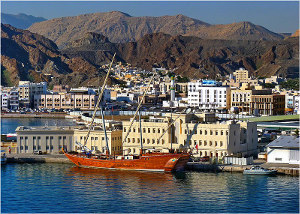Insurance industry reforms in the Gulf countries
 King Abdullah Financial Centre © B.alotaby, CC BY -SA 4.0 King Abdullah Financial Centre © B.alotaby, CC BY -SA 4.0 |
The supervisory authorities have conducted remarkable clean-up and development work for the insurance industry. Their objective was to render the market more competitive and consistent with international standards.
The main reforms undertaken for two years in the different countries are described hereafter.
Insurance reforms in the United Arab Emirates
The United Arab Emirates remains the first market in the region in terms of turnover, with collected premiums amounting to 10.2 billion USD in 2016. The country also accounts for 39% of the contributions in the region.
Still in late 2016, the Emirati insurance market remained extremely fragmented, counting 61 insurance companies, 22 of which are foreign.
The United Arab Emirates started the upgrading of its legislative framework with the following major measures:
- introduction of a new motor insurance regulation covering third part liability and damage to the vehicle. The new legislation is designed to regulate supply ensuring affordable tariffs based on actuarial calculations,
- devising a 2017-2021 strategic plan by the supervisory authority,
- setting up, in early 2017, a compulsory health insurance cover for foreign workers,
- introduction of a compulsory insurance for drones used for commercial purposes in the Emirate of Dubai,
- levying, as of January 1, 2018, a value-added tax (VAT) of 5% applicable to motor insurance premiums, a tax that will be later extended to property damage and health classes of business,
- promulgation of new requirements for life insurers in 2018,
- introduction of a specific regulation for insurance brokers on capital and remuneration,
- a 49% increase in the shareholding of foreign companies in the capital of local insurance companies, a rate previously set at 25%.
Insurance reforms in Saudi Arabia
The Saudi insurance market counts 34 insurance companies. It posted a turnover of 9.8 billion USD in 2016 against 9.7 billion USD in 2015, that is a 1% growth rate in 12 months. The health class of business, alone, accounts for more than 50% of the premiums collected while the life class of business (protection & savings), as such, is almost inexistent.
Saudi Arabian Monetary Agency, SAMA, is endeavoring to consolidate the insurance industry, with numerous reforms undertaken in recent years. Here below are the main regulatory measures recently introduced or being introduced:
- a new pricing method for motor third party liability based on a “bonus/penalty” system,
- levying of a 5% tax on non-life insurance policies as of January 1, 2018,
- promulgation of a decree authorizing women to drive cars,
- upcoming increase in minimum share capital for insurance companies,
- encouragement of market concentration moves.
Insurance reforms in Qatar
In the course of the recent six years, the overall premium volume has multiplied by almost 2.5 with progression rates peaking by 48.9% in 2013 and by 34% in 2014. The Qatari insurance market slowed down in 2015 and 2016 with much more modest increases of 5% and 4% respectively.
Note that, life insurance is struggling to develop, accounting for only 1.6% of the overall premium volume in 2016.
Just like neighboring countries, Qatar has initiated numerous reforms that are meant to consolidate the insurance industry and provide it with a legal framework better adapted to modern requirements.
Main measures introduced or being introduced:
- entry into force as of April 2016 of several amendments to the insurance code. The main provisions target insurance company licensing, risk management, supervising the business, accounting reports, actuarial matters,…
- better coaching of the motor class of business by Qatar Central Bank (QCB),
- extension of compulsory insurance plans, increasing compulsory health insurance tariffs,
- setting a new amount for minimum share capital at 100 million QAR (27.5 million USD).
Insurance reforms in Oman
 Muscat view, Oman © patano, CC BY -SA 3.0 Muscat view, Oman © patano, CC BY -SA 3.0 |
Following a period of sustained growth from 2011 to 2015, the Omani insurance market went on a free fall in 2016 with a modest evolution of 1.86%.
The falling oil prices and declining infrastructure investments weighed on the insurance industry.
Several reforms have been initiated with the objective of boosting the sector:
- establishment as of January 2018 of a compulsory health insurance system, a class of business that already generated 26% of the overall premium volume in 2016,
- a new regulation regarding minimum capital of insurance companies rising from 12.9 to 25.9 million USD,
- encouragement of merger operations among companies, driving the market from 22 insurers to a maximum number of 20: 10 national companies and 10 foreign branches,
- the obligation of introducing 40% of national insurance companies' capital in the stock market,
- promulgation in March 2016 of a regulatory framework specific to takaful insurance.
Insurance reforms in Kuwait
The Kuwaiti insurance market reported in 2016 the highest growth rate in the Gulf Cooperation Council zone (+6.5%). This recovery comes following a 1.1% premium decline in 2015.
The market counts for 35 local companies operating in both conventional and Takaful insurance.
An upgrading of the insurance legal framework has been initiated in 2017 with the following main measures:
- new requirements as regards minimum share capital for insurance and reinsurance companies,
- introduction of compulsory health insurance for foreign workers.
Insurance reforms in Bahrain
According to Bahrain’s Central Bank, the turnover of the insurance market in 2016 reached 727 million USD. Non-life insurance accounted for 81% of the premiums collected. According to experts, the life class of business, currently under-exploited, showcases interesting growth potential.
The Bahraini insurance market has 27 companies, 13 of which are national, six specialized in Takaful and eight subsidiaries of foreign companies. Being the only insurance and reinsurance center in the entire region at the beginning of the 1980s, Bahrain is clearly lagging behind in comparison with all its neighbors. Bahrain Financial Center has been overtaken by that of Dubai and Qatar.
In an effort to boost insurance activities, the supervisory authorities have introduced since 2015 new requirements as regards solvency. With the market being in full swing of restructuring, merger-acquisition moves have been encouraged. The objective is to set up entities that are sizable enough to face a hyper-competitive regional environment.